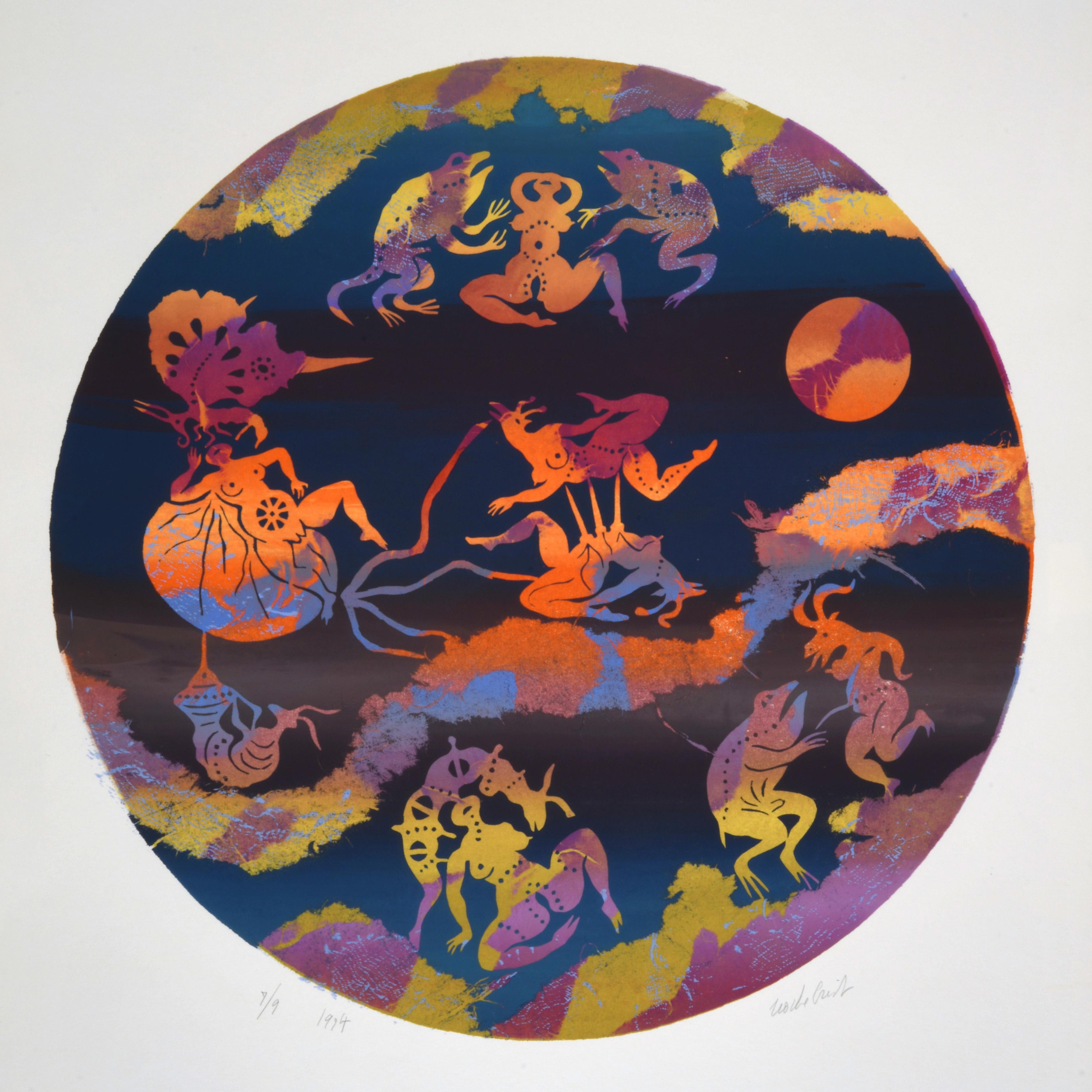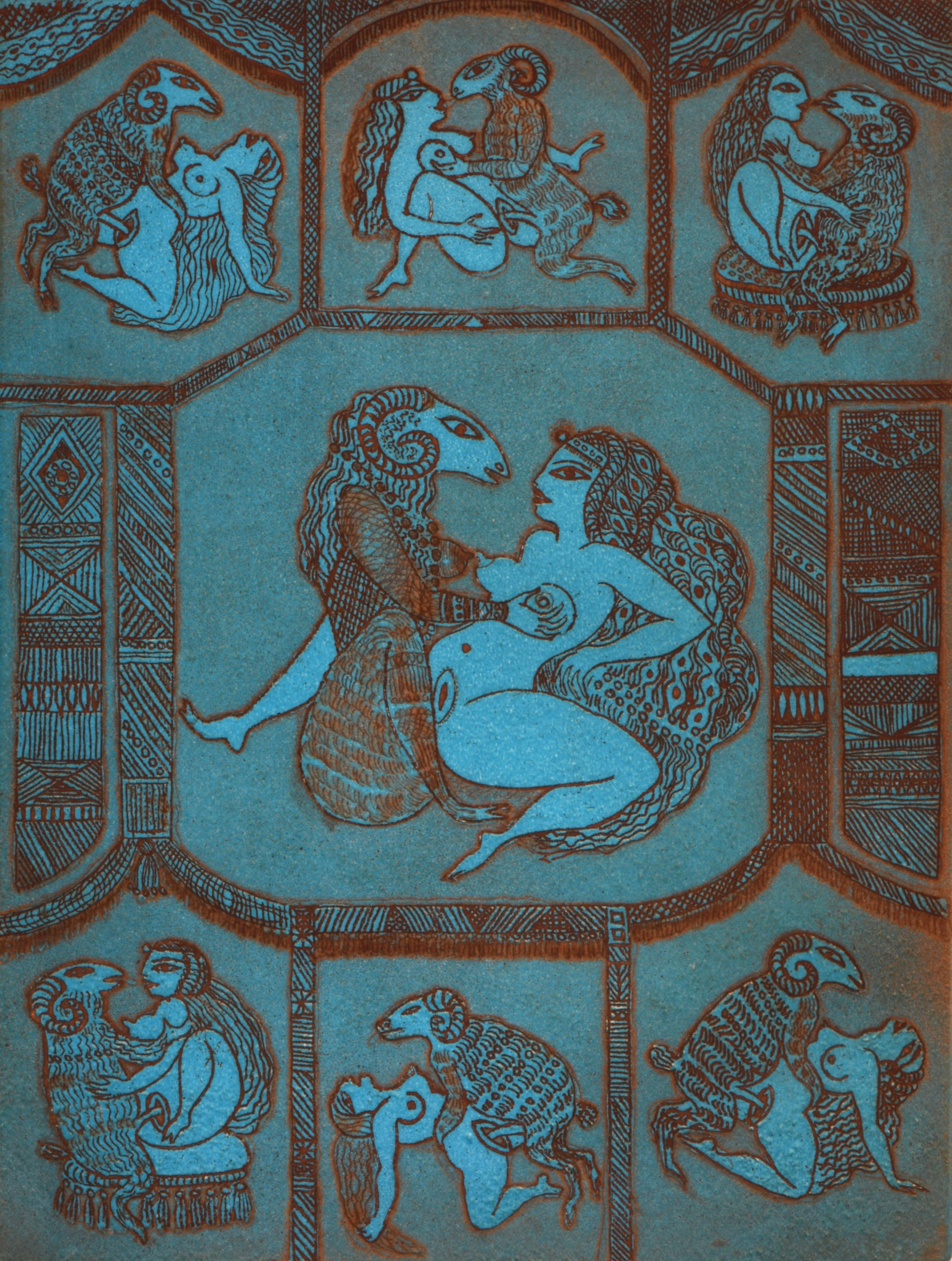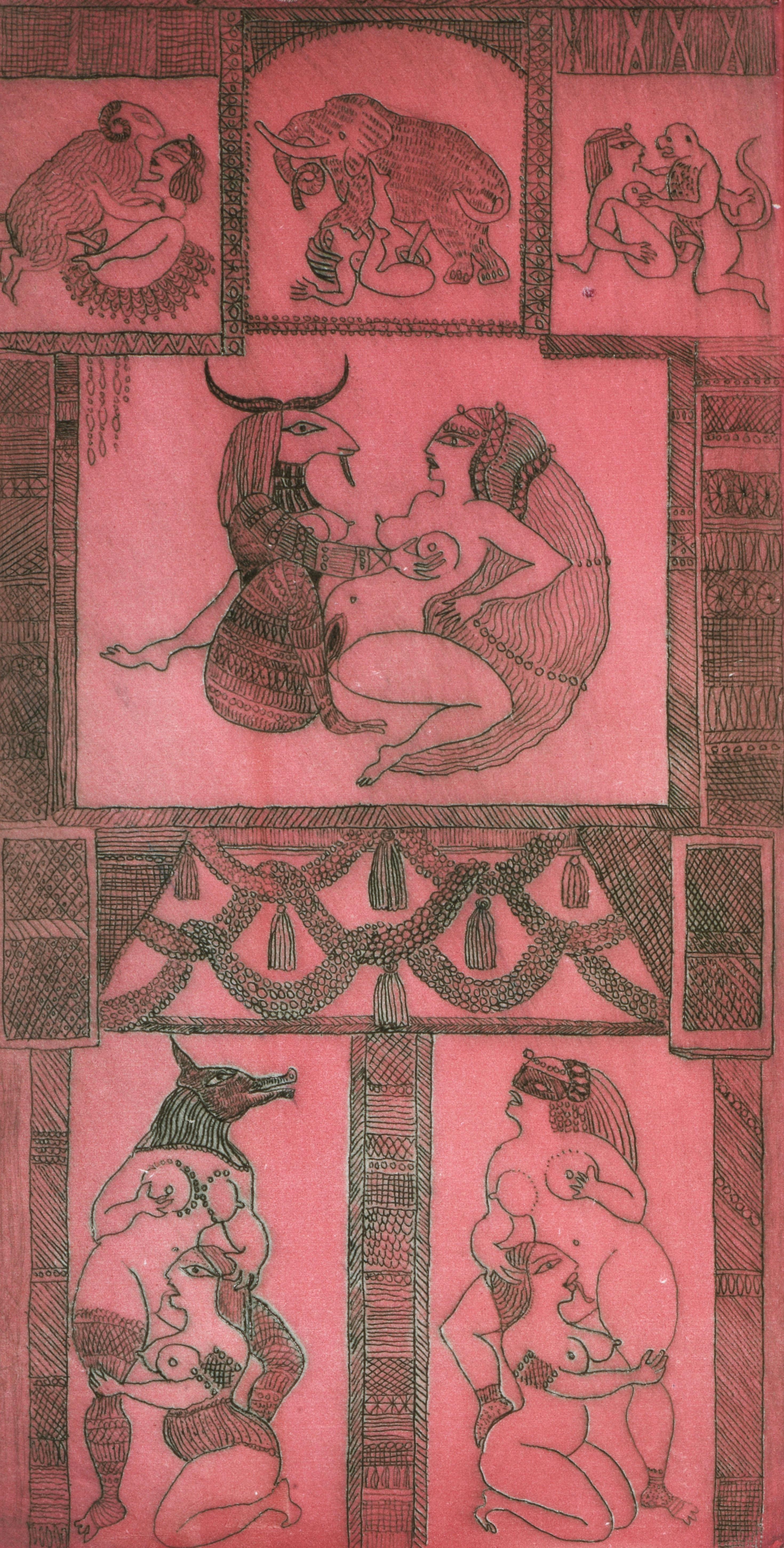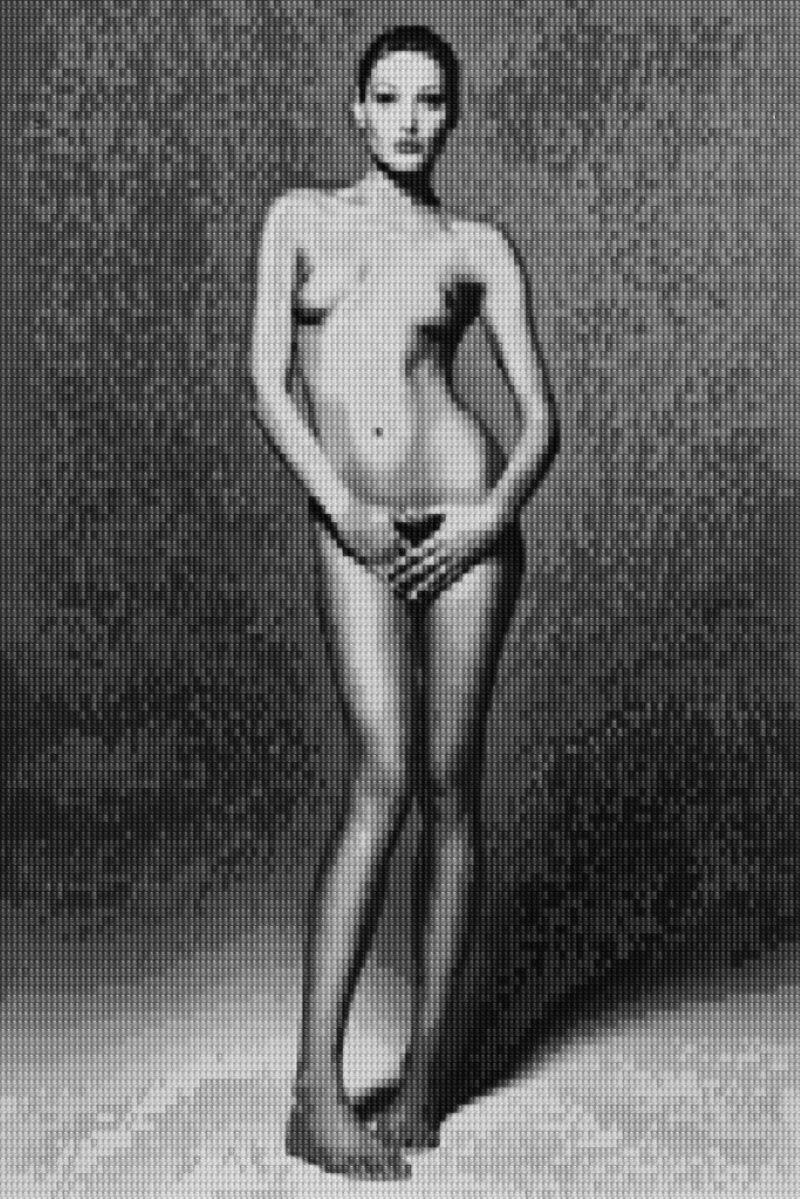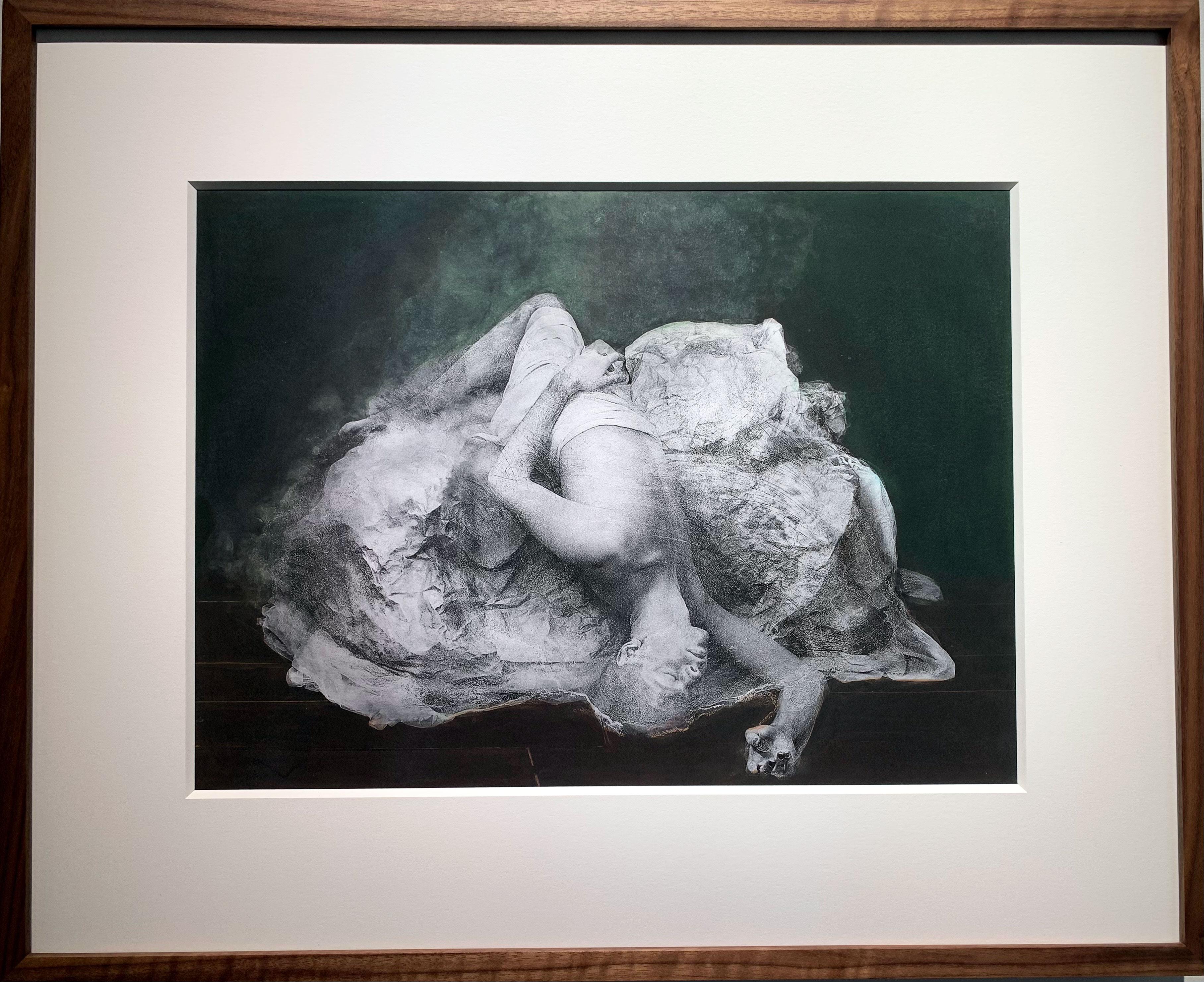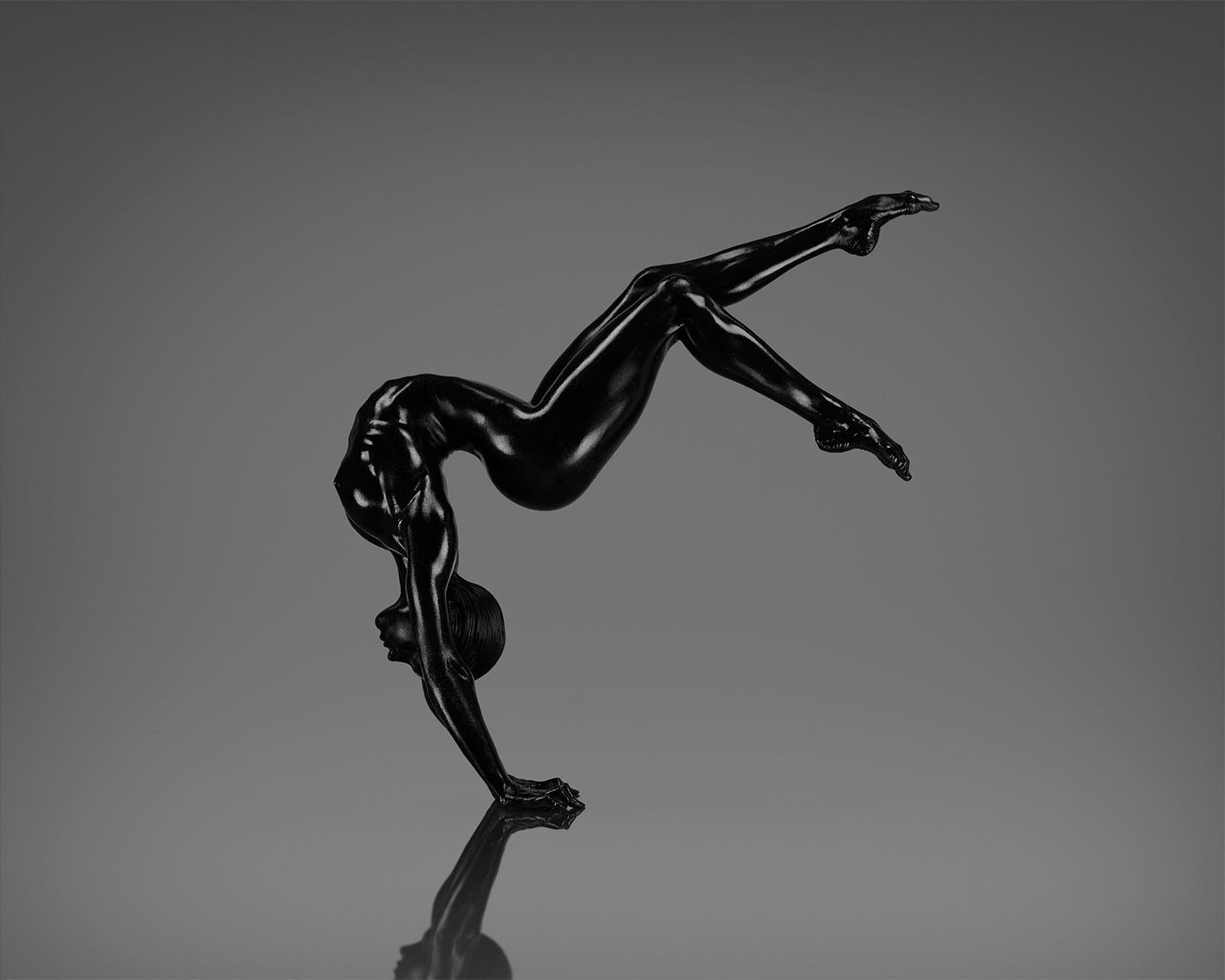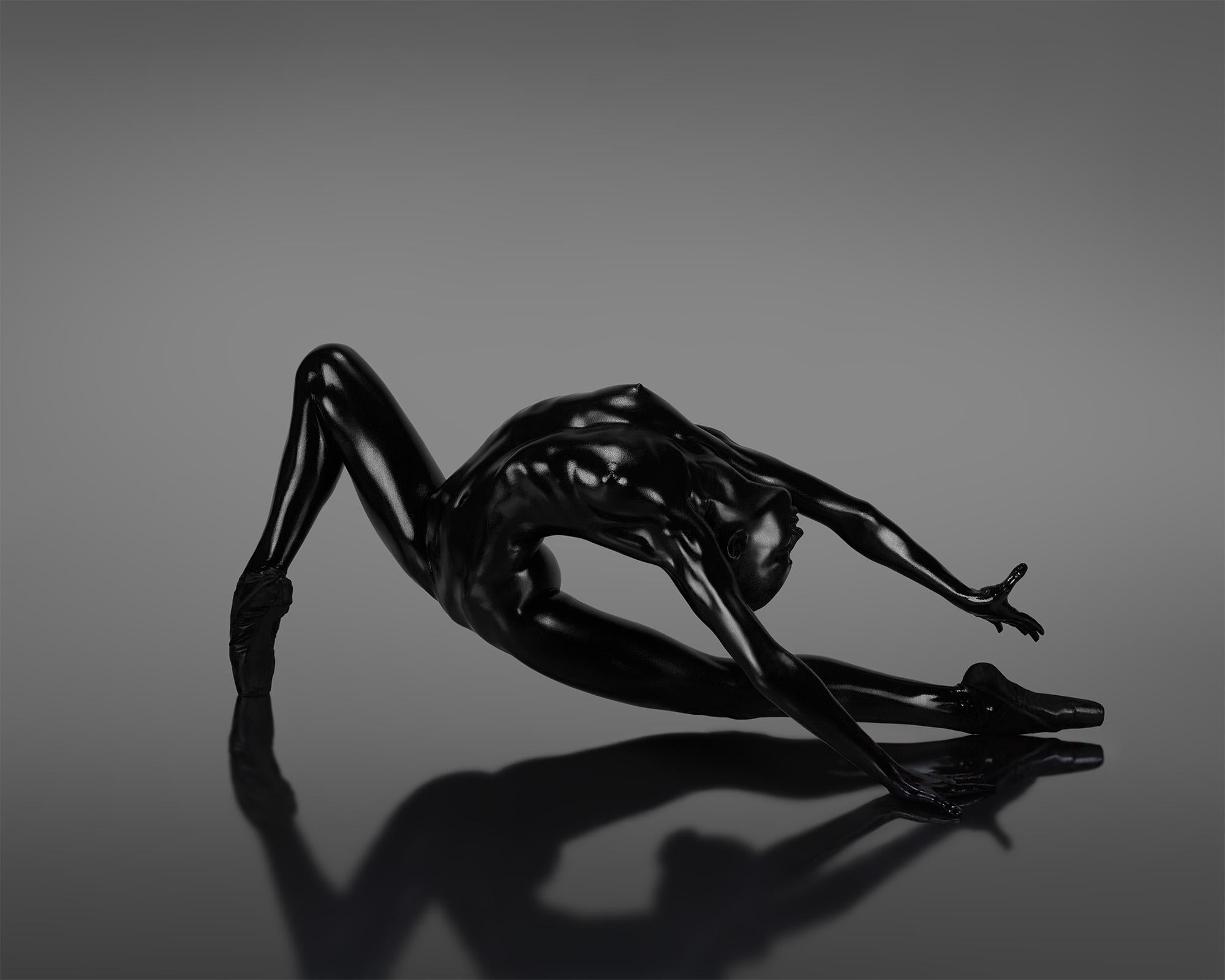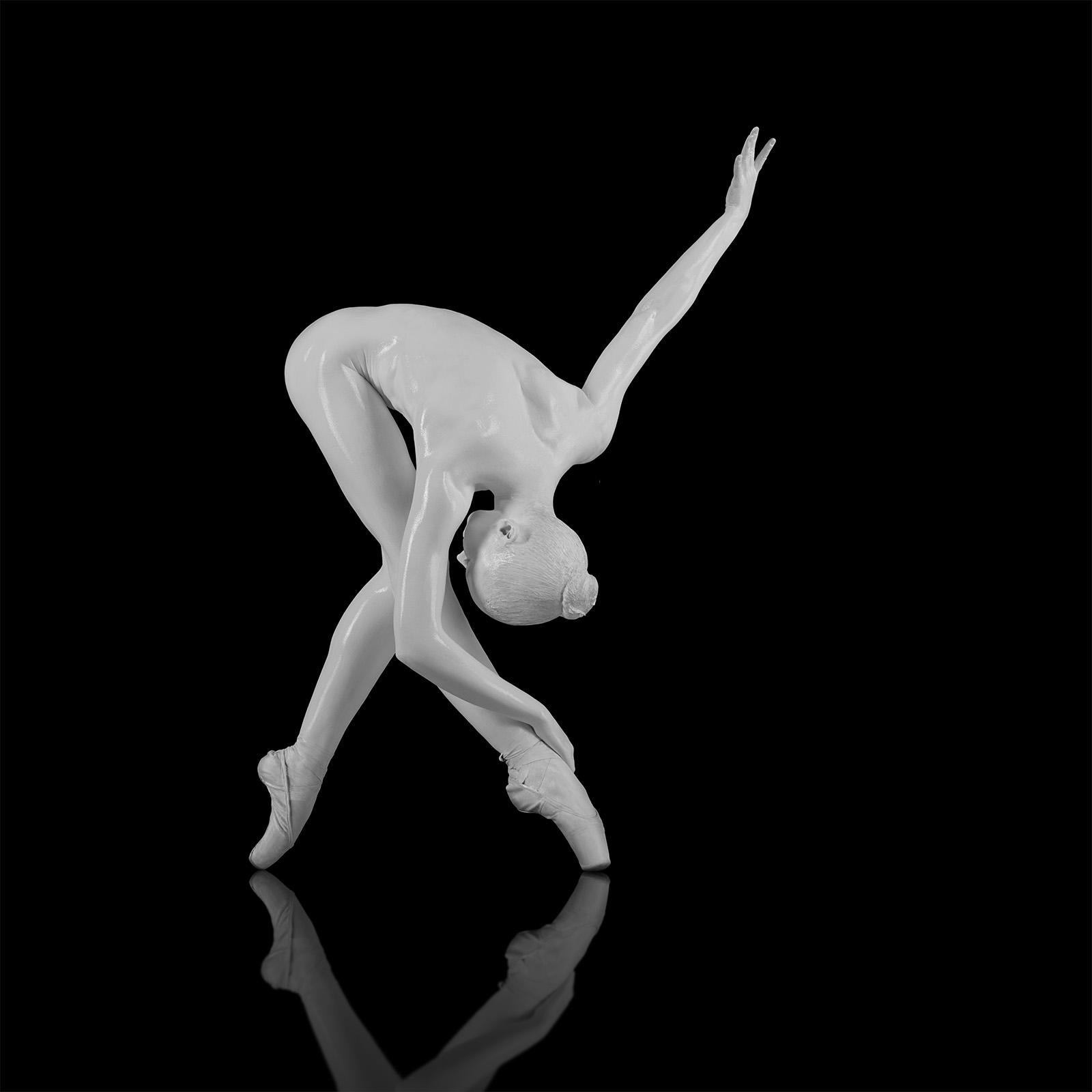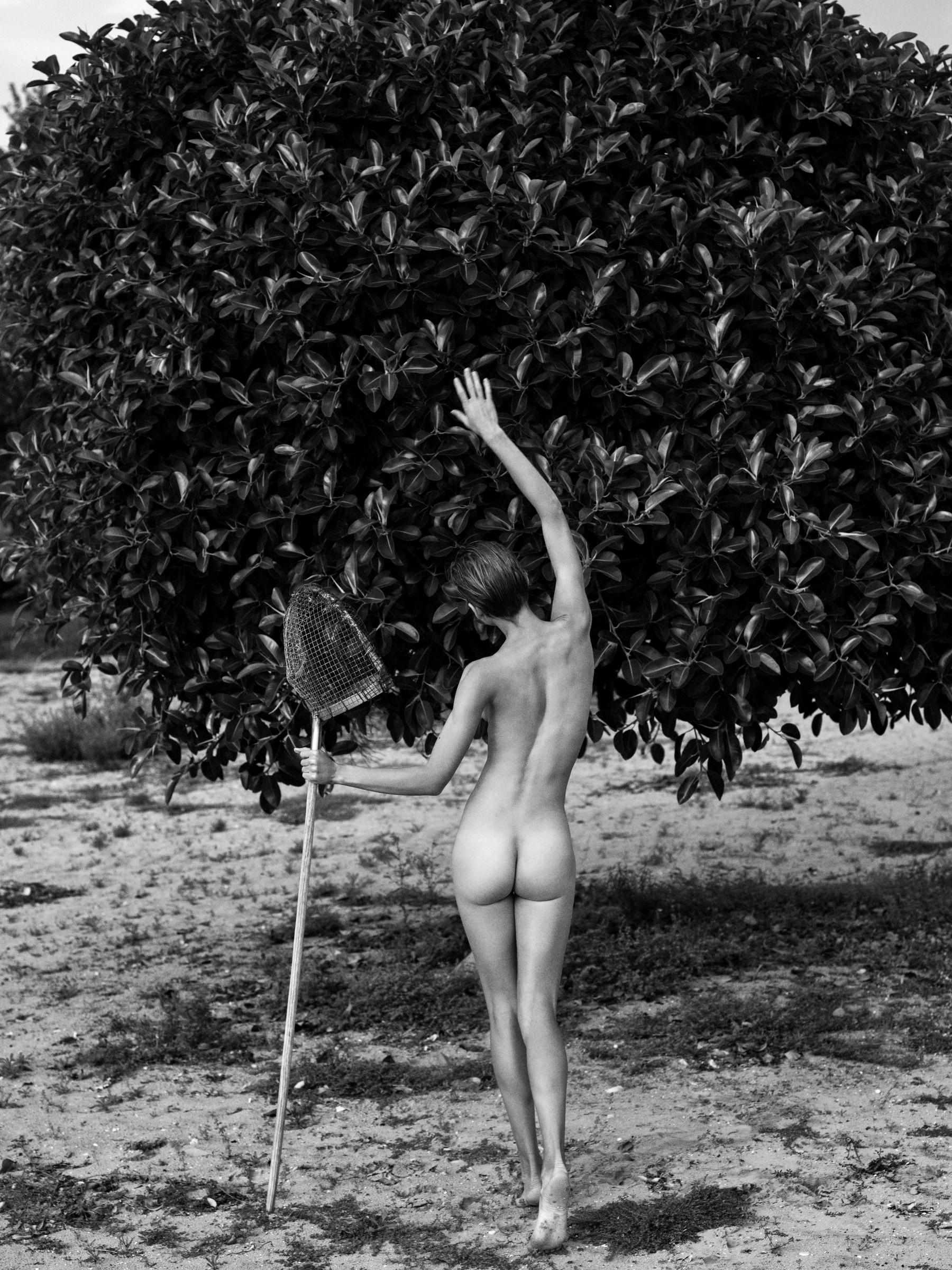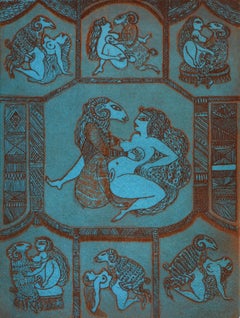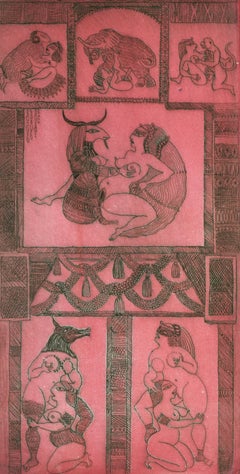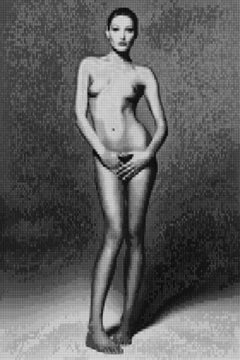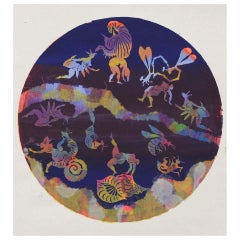
Noche Crist "Succubus Festival"
Want more images or videos?
Request additional images or videos from the seller
1 of 10
Noche CristNoche Crist "Succubus Festival"1973
1973
About the Item
- Creator:Noche Crist (1909 - 2004)
- Creation Year:1973
- Dimensions:Height: 30 in (76.2 cm)Width: 20 in (50.8 cm)Depth: 0.25 in (6.35 mm)
- Medium:
- Movement & Style:
- Period:
- Condition:
- Gallery Location:Washington, DC
- Reference Number:1stDibs: LU133726669742
About the Seller
5.0
Vetted Seller
These experienced sellers undergo a comprehensive evaluation by our team of in-house experts.
1stDibs seller since 2020
40 sales on 1stDibs
More From This SellerView All
- "Succubus Festival"Located in Washington, DCSilkscreen work by Noche Crist (1909- 2004). Marked in pencil 7/9 lower left. Printed in 1974 by the artist. Image is from her "Succubus Festival" series. Catalogue of a postumous re...Category
1970s Outsider Art Nude Prints
MaterialsPaper
- Year of the RamLocated in Washington, DCSilkscreen work by Noche Crist (1909- 2004). Marked in pencil 3/15 lower left. Printed by the artist in the 1970s. Image is from her Year of the Ram series...Category
1970s Outsider Art Nude Prints
MaterialsPaper
- Women Loving WoomenLocated in Washington, DCSigned silkscreen work by Noche Crist (1909- 2004). From Women Loving Woomen series. Wonderful work printed by the artist on thick paper. Catalogue of a postumous retrospective in...Category
1970s Outsider Art Nude Prints
MaterialsPaper
- "Sitting Bull Goes To Washington"Located in Washington, DCSilkscreen work by Noche Crist (1909- 2004). Work is from from her "Sitting Bull Goes to Washington" series. Marked in pencil 15/18 lower left. Printed in 1976 by the artist. Catalo...Category
1970s Outsider Art Figurative Prints
MaterialsPaper
- "Carousel"Located in Washington, DCSilkscreen work by Noche Crist (1909- 2004). Marked in pencil 28/30 lower left. Printed in 1973 by the artist. Image is from her "Carrousel" series. Catalogue of a postumous retrospe...Category
1970s Outsider Art Animal Prints
MaterialsPaper, Ink
- Traveling MagiciansLocated in Washington, DCOne of a kind painting by Noche Crist (1909- 2004). Noche Crist was an American artist born in Romania. Acrylic painting is on plaster on wood which gives the painting a wonderful te...Category
1990s Outsider Art Animal Paintings
MaterialsPlaster, Wood, Acrylic
You May Also Like
- Singing in the Bath, Tenakee SpringsLocated in San Francisco, CAThis artwork titled "Singing in the Bath, Tenakee Springs" 1996 is a color offset lithograph on paper by noted American artist Rie Mounier Munoz, 1921-2015. It is hand signed and numbered 1077/1100 in pencil by the artist. The image size is 13.5 x 10 inches, sheet size is 16 x 12.35 inches. It is in excellent condition, has never been framed. About the artist: Alaska painter Rie Mounier Munoz was the child of Dutch parents who immigrated to California, where she was born and raised. She is known for her colorful scenes of everyday life in Alaska. Rie (from Marie) Munoz (moo nyos), studied art at Washington and Lee University in Virginia. In 1950, she traveled up the Inside Passage by steamship, fell in love with Juneau, and gave herself until the boat left the next day to find a job and a place to live. Since then Juneau has been home to Munoz. She began painting small vignettes of Alaska soon after arriving in Juneau, and also studied art at the University of Alaska-Juneau. Munoz painted in oils in what she describes as a "painstakingly realistic" style, which she found stiff and "somewhat boring." Her breakthrough came a few years later when an artist friend introduced her to a versatile, water-soluble paint called casein. The immediacy of this inexpensive medium prompted an entirely new style. Rie's paintings became colorful and carefree, mirroring her own optimistic attitude toward life. With her newfound technique she set about recording everyday scenes of Alaskans at work and at play. Of the many jobs she has held journalist, teacher, museum curator, artist, mother, Munoz recalls one of her most memorable was as a teacher on King Island in 1951, where she taught 25 Eskimo children. The island was a 13-hour umiak (a walrus skin boat) voyage from Nome, an experience she remembers vividly. After teaching in the Inupiat Eskimo village on the island with her husband during one school year, she felt a special affinity for Alaska's Native peoples and deliberately set about recording their traditional lifestyles that she knew to be changing very fast. For the next twenty years, Rie practiced her art as a "Sunday painter," in and around prospecting with her husband, raising a son, and working as a freelance commercial artist, illustrator, cartoonist, and curator of exhibits for the Alaska State Museum. During her years in Alaska, Munoz has lived in a variety of small Alaskan communities, including prospecting and mining camps. Her paintings reflect an interest in the day-to-day activities of village life such as fishing, berry picking, children at play, as well as her love of folklore and legends. Munoz says that what has appealed to her most were "images you might not think an artist would want to paint," such as people butchering crab, skinning a seal, or doing their laundry in a hand-cranked washing machine. In 1972, with her hand-cut stencil and serigraph prints selling well in four locations in Alaska, she felt confident enough to leave her job at the Alaska State Museum and devote herself full time to her art. Freed from the constraints of an office job, she began to produce close to a hundred paintings a year, in addition to stone lithograph and serigraph prints. From her earliest days as an artist, Rie had firm beliefs about selling her work. First, she insisted the edition size should be kept modest. When she decided in 1973 to reproduce Eskimo Story Teller as an offset lithography print and found the minimum print run to be 500, she destroyed 200 of the prints. She did the same with King Island, her second reproduction. Reluctantly, to meet market demand, she increased the edition size of the reproductions to 500 and then 750. The editions stayed at that level for almost ten years before climbing to 950 and 1250. Her work has been exhibited many solo watercolor exhibits in Alaska, Oregon and Washington State, including the Charles and Emma Frye Art Museum, Alaska State Museum in Juneau, Anchorage Historical and Fine Arts Museum, Tongass Historical Museum in Ketchikan, and Yukon Regional Library in Whitehorse; Yukon Territory, and included in exhibits at the Smithsonian Institute and Russell Senate Office Building in Washington, D.C. Munozs paintings have graced the covers of countless publications, from cookbooks to mail order catalogs, and been published in magazines, newspapers, posters, calendars, and two previous collections of her work: Rie Munoz...Category
Late 20th Century Folk Art Nude Prints
MaterialsLithograph
- Steam Bath, AniakLocated in San Francisco, CAThis artwork titled "Steam Bath, Aniak" 1995 is a color offset lithograph on paper by noted American artist Rie Mounier Munoz, 1921-2015. It is hand signed and numbered 38/950 in pencil by the artist. The image size is 6.75 x 10 inches, sheet size is 10.5 x 14 inches. It is in excellent condition.. About the artist: Alaska painter Rie Mounier Munoz was the child of Dutch parents who immigrated to California, where she was born and raised. She is known for her colorful scenes of everyday life in Alaska. Rie (from Marie) Munoz (moo nyos), studied art at Washington and Lee University in Virginia. In 1950, she traveled up the Inside Passage by steamship, fell in love with Juneau, and gave herself until the boat left the next day to find a job and a place to live. Since then Juneau has been home to Munoz. She began painting small vignettes of Alaska soon after arriving in Juneau, and also studied art at the University of Alaska-Juneau. Munoz painted in oils in what she describes as a "painstakingly realistic" style, which she found stiff and "somewhat boring." Her breakthrough came a few years later when an artist friend introduced her to a versatile, water-soluble paint called casein. The immediacy of this inexpensive medium prompted an entirely new style. Rie's paintings became colorful and carefree, mirroring her own optimistic attitude toward life. With her newfound technique she set about recording everyday scenes of Alaskans at work and at play. Of the many jobs she has held journalist, teacher, museum curator, artist, mother, Munoz recalls one of her most memorable was as a teacher on King Island in 1951, where she taught 25 Eskimo children. The island was a 13-hour umiak (a walrus skin boat) voyage from Nome, an experience she remembers vividly. After teaching in the Inupiat Eskimo village on the island with her husband during one school year, she felt a special affinity for Alaska's Native peoples and deliberately set about recording their traditional lifestyles that she knew to be changing very fast. For the next twenty years, Rie practiced her art as a "Sunday painter," in and around prospecting with her husband, raising a son, and working as a freelance commercial artist, illustrator, cartoonist, and curator of exhibits for the Alaska State Museum. During her years in Alaska, Munoz has lived in a variety of small Alaskan communities, including prospecting and mining camps. Her paintings reflect an interest in the day-to-day activities of village life such as fishing, berry picking, children at play, as well as her love of folklore and legends. Munoz says that what has appealed to her most were "images you might not think an artist would want to paint," such as people butchering crab, skinning a seal, or doing their laundry in a hand-cranked washing machine. In 1972, with her hand-cut stencil and serigraph prints selling well in four locations in Alaska, she felt confident enough to leave her job at the Alaska State Museum and devote herself full time to her art. Freed from the constraints of an office job, she began to produce close to a hundred paintings a year, in addition to stone lithograph and serigraph prints. From her earliest days as an artist, Rie had firm beliefs about selling her work. First, she insisted the edition size should be kept modest. When she decided in 1973 to reproduce Eskimo Story Teller as an offset lithography print and found the minimum print run to be 500, she destroyed 200 of the prints. She did the same with King Island, her second reproduction. Reluctantly, to meet market demand, she increased the edition size of the reproductions to 500 and then 750. The editions stayed at that level for almost ten years before climbing to 950 and 1250. Her work has been exhibited many solo watercolor exhibits in Alaska, Oregon and Washington State, including the Charles and Emma Frye Art Museum, Alaska State Museum in Juneau, Anchorage Historical and Fine Arts Museum, Tongass Historical Museum in Ketchikan, and Yukon Regional Library in Whitehorse; Yukon Territory, and included in exhibits at the Smithsonian Institute and Russell Senate Office Building in Washington, D.C. Munozs paintings have graced the covers of countless publications, from cookbooks to mail order catalogs, and been published in magazines, newspapers, posters, calendars, and two previous collections of her work: Rie Munoz...Category
Late 20th Century Folk Art Nude Prints
MaterialsLithograph
- Bruni vs Sarkosy, After ComteBy Alex Guofeng CaoLocated in New York, NYIn a captivating new collection, Alex Guofeng Cao dazzles audiences with his unique twist on instantly recognizable images. Inspired by history and pop culture, Cao manipulates one iconic image to create another in his extraordinary large-scale works. From a distance, the pieces appear to be a singular image but as the viewer approaches closer, you find each work is a masterfully crafted compilation of minute detailed images layered next to one another, creating a mesmerizing and hypnotic optical illusion. Cao meticulously places each smaller image to form a dynamic gradient from dark to light which tricks the eye into seeing one image. This expertise in contrast is exemplified in all of his works, from striking black and white pieces to stunning explorations in high-definition color. He cleverly mirrors this visual contrast in his subject matter by subverting the main image and creating a dialogue between the macrocosm and microcosm. Take the piece, Ali vs Armstrong; here we see the iconic image of Muhammed Ali’s victory composed of thousands of tiny portraits...Category
Early 2000s Contemporary Portrait Prints
MaterialsPlexiglass, Archival Ink, Mixed Media, Archival Paper, Archival Pigment
Price Upon Request - Dear One Threads A Cocoon - Unique Hand-coloured Print in Walnut frameLocated in London, GBHand-coloured portrait of a human larvae bursting out of their cocoon, immobilised in marble. Representative of a safe and isolating space, the cocoon is both a cage and a shelter. This tale is a study of transformation, of breaking apart and coming back together as the larvae emerges from the silken threads. Taken from The Sialia Marbles, a series of portraits containing ephemeral human sculptures taken between 2016-19. Together these works act as tales contained in a fictional sculpture hall, in direct reaction to Andre Malraux’s 1947 Le Musee Imaginaire (Museum Without Walls). During the beginning of the 'Museum Age' in the 18th century , writer Johann Wolfgang Von Goethe discussed mythical sculpture...Category
18th Century Other Art Style Figurative Photography
MaterialsCotton, Archival Pigment, Pigment, Giclée, Black and White, Walnut, Pain...
$2,242 Sale Price35% Off - No title (No 58) Art print 38" x 47" inch Edition of 18 by Yevgeniy RepiashenkoBy Yevgeniy RepiashenkoLocated in Culver City, CANo title (No 58) Art print 38" x 47" inch Edition of 18 by Yevgeniy Repiashenko Year photo was taken: 2020 Art Print Picture size: Height: 38" inch Width: 47" inch * * * NOT fram...Category
21st Century and Contemporary Contemporary Nude Photography
MaterialsArchival Paper, Pigment
- No title (No 49) Art print Edition 2/28 (29x36 inch) by Yevgeniy RepiashenkoBy Yevgeniy RepiashenkoLocated in Culver City, CANo title (No 49) Art print Edition 2/28 (29x36 inch) by Yevgeniy Repiashenko Year photo was taken: 2016 Art Print Picture size: Height: 29" inch Width: 36" inch * * * NOT framed ...Category
21st Century and Contemporary Contemporary Nude Photography
MaterialsPigment, Archival Paper
